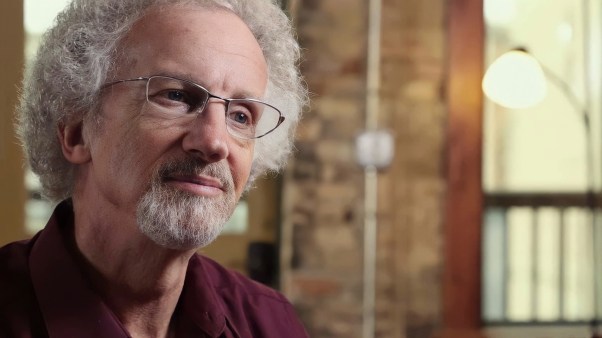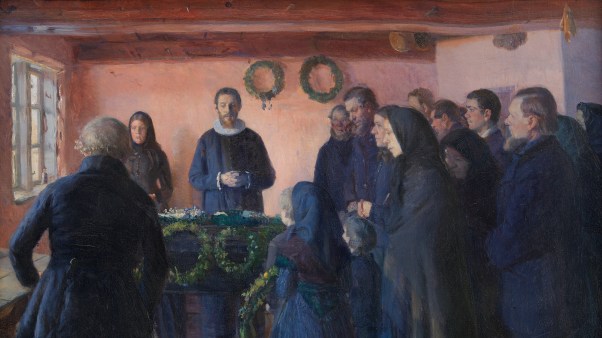On a brisk January morning in 1827, Harriet Livermore mounted the speaker’s chair in the Hall of Representatives and became one of the first women to deliver a sermon in the United States Congress. She preached to an overflowing crowd of more than a thousand, including President John Quincy Adams, who sat on the steps leading up to her since there were no other free seats.
After reading Psalm 112, she preached from 2 Samuel 23:3, which says, “He that ruleth over men must be just, ruling in the fear of God” (KJV). Newspaper reports of the crowd’s reaction, with quiet weeping and overt sobbing, were lavish with praise. Livermore would go on to speak in that very chamber three more times—from 1832 to 1843—and always before considerable crowds.
Livermore’s generation was one in which the Scriptures were under fresh scrutiny. Just six years after she was born in 1788, famed hero of the American Revolution Thomas Paine published The Age of Reason,in which he launched an assault on the Bible. At about the same time, Thomas Jefferson famously produced a Bible void of miracles. Yet in the end, such detractors did not win the day.
In fact, the Bible remained a dominant influence on early American life—a reality nowhere more apparent than in the founding of the American Bible Society (ABS) in 1816. The fledgling nation already boasted of over 100 local Bible societies—six times the number of states in the union. And by 1829, the ABS had announced its ambitious plans to put a Bible in every American home.
In such an era, women who fought for the right to preach had to defend their stance biblically. And defend they did! Within a generation of the American Revolution’s end, women began launching their first apologetic salvos—each beginning with the word scriptural.
In 1820, a woman named Deborah Peirce published a slender treatise entitled A Scriptural Vindication of Female Preaching, Prophesying, or Exhortation. Four years later, Harriet Livermore penned a more substantial work on the subject, entitled Scriptural Evidence in Favour of Female Testimony in Meetings for Christian Worship. Hers was an extraordinary defense—innovative and independent—that mirrored the remarkable, even eccentric, woman who wrote it.
Within three years, her work had garnered enough attention to merit her an invitation to preach on the national stage of Congress. And in view of last year’s 200th anniversary of Livermore’s landmark defense, hers is a story worth remembering this women’s history month.
As a young adult, thanks to her father’s high-profile position as a district attorney and member of Congress, Livermore enjoyed deftly navigating the Washington, DC, social circuit. Then, at the age of 23, she abruptly and inexplicably declared that she would devote herself to a religious life. Soon, the former party girl had transformed into the model of a pious and devoted debutante.
A decade later, in 1821, the intrepid Livermore spoke in public with men present for the first time at meetings of the Freewill Baptist Church. Her initial steps into public speaking were halting. The first time she spoke, she prayed aloud during a meeting. Another time, she spoke to the congregation for about five minutes after the preacher delivered a sermon. Although these steps were modest, her Christian friends criticized her for overstepping her biblical bounds as a woman. She quit public speaking—but not for long.
Livermore soon began touring New England, preaching as far south as Philadelphia. At that time, one of Livermore’s female friends named Julia asked her “to transcribe … those passages in Scripture, which might place the subject in a favourable point of view”—that is, the subject of female preaching. This letter became the basis of her book.
Livermore confronted long-standing views of women held by most Americans and also had the opportunity to address a bevy of influential British commentators, the likes of Matthew Henry, Philip Doddridge, Thomas Scott, and Adam Clarke—whose commentaries were so influential that they were published under the authors’ last names, including Matthew Henry’s Commentary, Scott’s Bible and Clarke’s Bible.
As part of her argument, Livermore pointed to an inconspicuous passage tucked into Paul’s letter to the Philippians. In chapter 4, verses 2–3, Paul referred to Euodia and Syntyche: “I implore Euodia and I implore Syntyche to be of the same mind in the Lord. And I urge you also, true companion, help these women who labored with me in the gospel, with Clement also, and the rest of my fellow workers, whose names are in the Book of Life” (NKJV).
At the time, most commentators insisted the “labor” mentioned here didn’t include preaching. For instance, Matthew Henry claimed that women assisted ministers “by entertaining the ministers, visiting the sick, instructing the ignorant, convincing the erroneous. Thus women may be helpful to ministers in the work of the Gospel.” Women, in short, could assist ministers but not preach themselves.
Yet Livermore countered by posing the rhetorical question, “Ah! Does Paul say they laboured for me? No, they laboured with me in the Gospel.” Labor in the gospel is not, she pointed out, labor for the gospel.
She went further still when she contended, on the basis of Augustin Calmet’s highly regarded Bible dictionary, that the infant church in Philippi “was disciplined and governed by two women,” not men. In an era of American history when women had no say in the governance of the church, with the exception of the Quakers, Livermore’s succinct declaration was explosive.
No defense of a woman’s right to preach would be compelling without addressing Paul’s mandate for women to be silent: “Women should remain silent in the churches. They are not allowed to speak, but must be in submission, as the law says” (1 Cor. 14:34, KJV).
When commentators interpreted passages on women in 1 Corinthians, they faced a conundrum. While chapter 14 seems to argue that women should not speak in church (v. 34), Paul referred to “every man who prays or prophesies” and equally to “every woman who prays or prophesies” chapters later (11:4–5). Commentators tended to crack this conundrum by distinguishing between inspired women who prophesied and prayed in 11:4–5 and uninspired women in 14:34–35.
Commentators also tended to describe the uninspired women of chapter 14 as disruptive. Thomas Scott, for example, conjectured that these women Paul addressed would speak publicly “when not under any immediate impulse of the Holy Spirit; and perhaps they interrupted the other speakers by enquiries or objections, according to the disputatious spirit that prevailed.” Adam Clarke concurred: “All that the apostle opposes here is their [the uninspired women] questioning, finding fault, disputing,&c, in the Christian Church.”
Livermore found allies in these commentators and followed their lead by drawing the same distinction. She described the women whom Paul silenced in 1 Corinthians 14 as conducting themselves “in a very unbecoming manner in their church meetings, opposing and contradicting the brethren; usurping authority over them.” Paul, as she interpreted his letter to mean, silenced these kinds of women in Corinth—but certainly not all women. This gave her a foothold to argue that inspired women in the early church did speak aloud.
Yet beyond the distinction between inspired and uninspired women, Livermore made a further distinction in the type of church gatherings in which women should be able to speak.
When she wrote her Scriptural Evidence, Livermore was associated with the Christian Connection, a church founded in New England in the early 1800s for the restoration of apostolic Christianity. It held two types of meetings. In meetings devoted to worship, women could speak; in business meetings, they could not. Livermore superimposed these two categories onto the context of 1 Corinthians: She identified worship meetings with women praying and prophesying in chapter 11 and business meetings with women remaining silent in chapter 14.
Yet—and this is essential for understanding Livermore—while she acknowledged the Christian Connection’s distinction, she herself breached the silence demanded of women in business meetings. In her autobiography, Livermore recounted how she had spoken in an all-male business meeting of elders.
But rather than vilifying her, “those brethren and fathers gained an evidence that the Holy Ghost was my teacher; for the same afternoon I received a certificate of their approbation to visit the [C]hristian churches.” Livermore broke the silence as an inspired woman, not just in worship gatherings but in church business meetings as well.
Soon after publishing her letters to her friend, Julia, however, Livermore left the constraints of the Christian Connection behind—and three years later, she was preaching on the national stage of Congress.
As Livermore grew older, her beliefs became stridently millennialist: She expected Jesus’ imminent return. She believed Native Americans were descendants of the ten lost tribes of Israel; their conversion to Christianity would be a prelude to the return of Jesus in Jerusalem. Motivated by this conviction, between 1836 and 1858, Livermore made no fewer than four transatlantic trips to Jerusalem, the last at age 70, to witness Jesus’ return.
Despite her blue-blooded birth, boarding-school education, and charismatic ability to sway crowds from Congress to Connecticut, Livermore’s popularity—and finances—dwindled as her millennial beliefs swelled. At one poignant moment in her later years of poverty, Livermore pawned her dead mother’s silver spoons to underwrite her itinerant preaching. She died in a Philadelphia almshouse and, at her request, was buried in an unmarked grave.
Harriet Livermore lived and died—as she described herself in a private letter to James Madison and in the title of one of her books—“a pilgrim stranger.”
Jack Levison holds the Power Chair at Perkins School of Theology. His recent books include a revised edition of Fresh Air. In 2021, his book A Boundless God won CT’s Award of Merit.
Priscilla Pope-Levison is research professor of practical theology in the Perkins School of Theology at Southern Methodist University. Her most recent book is Models of Evangelism.













